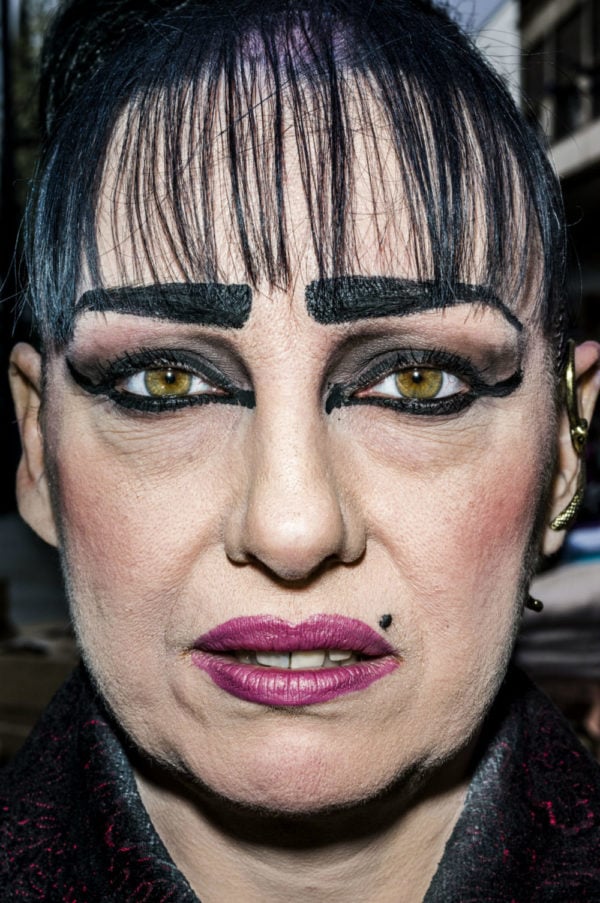
The US-born Magnum photographer Bruce Gilden does not flatter the people he meets or places he documents. He has taken warts-and-all portraits of Coney Island, state fairs across Middle America and, in July 2016, the Republican National Convention in Cleveland. But Gilden’s extraordinary, in-your-face portraits of ordinary people surviving on the breadline in Middle England have proved too much for its cultural institutions to stomach or show.
No art museum or institution in the Black Country, an area of the West Midlands that has experienced de-industrialization, has so far agreed to exhibit his series “Black Country Faces” more than three years after the community arts group Multistory commissioned the project.
A planned show of Gilden’s large-scale portraits, which Multistory director Emma Chetcuti hoped to organize at Birmingham Cathedral, fell through when the dean moved to another dioceses. “The director at [New Art Gallery] Walsall was very nice. He said he could show them on a staircase but they are 48 by 78 [inches].” Gilden tells artnet News.
Bruce Gilden, Peter ©Bruce Gilden/Magnum Photos
While no gallery or space in West Bromwich, Dudley, or Wolverhampton, all of which Gilden documented, has shown the unsparing images, visitors to London’s Barbican Art Gallery did get to see a few last year. They were chosen by fellow Magnum photographer Martin Parr for “Strange and Familiar,” an exhibition he organized in 2016 of work by international photographers who have documented Britain. Parr says: “I can see why people shy away from the Gilden photos, they are tough but true.” He has purchased the set shown at the Barbican and intends to display them at the Martin Parr Foundation in Bristol in the west of England.
Gilden is disappointed but not surprised that curators in the West Midlands prefer not to show his work. “People don’t like to look [at my photographs] because they might have to do something about it,” he says, adding that his images of Haiti, for example, provoke a different reaction. Of the Black Country, he says: “It’s a low-income place but I always feel for the underdog.” Being an outsider was an advantage, most of the time. “I am quite congenial, so it is easy for me to talk.” Everyone was friendly except one person, he says. “[They] thought I was an immigrant.”
Gilden is one of a number of leading artists commissioned by Multistory to document the community of Sandwell and its neighboring boroughs. Martin Parr photographed and filmed his “Black Country Stories” there from 2010-14, and had a big, well-received show at the Public in West Bromwich. The South African photographer David Goldblatt showed his Multistory project, “Ex-Offenders at the Scene of Crime,” at Her Majesty’s Prison Birmingham last year. Corinne Noordenbos, the former head of photography at the Royal Academy of Art (KABK) in The Hague, has documented elderly women in Walsall hospital. Many have lung disease after years working in the Black Country’s metal industries. An exhibition and photobook of Noordenbos’s portraits is planned for 2019. Meanwhile, US artist Susan Meiselas, who is another Magnum photographer, has worked with women who have suffered domestic abuse, documenting how they rebuilt their lives in a refuge. (None of their faces could be shown, only their rooms and possessions.) An exhibition is due to open in Sandwell of Meiselas and the women’s work as part of the “Room of Their Own” project on November 25 (until December 10) to mark the International Day for the Elimination of Violence against Women.
Newspaper billboard, Black Country Faces, ©Bruce Gilden/Magnum Photos
Meanwhile, Gilden still hopes that a venue can be found in the Black Country to show his unflinching portraits and “still-lifes.” The latter are gritty street photographs, some of them featuring newspaper billboards. “I was struck by the headlines, most of which were violent,” he says.